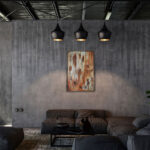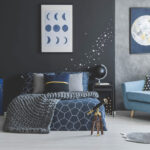The Role of Design Consultancy in Creating Personalized Spaces
Design consultancy services offer a flexible way for clients to gain professional guidance and insights into their interior spaces without committing to a full-service design project. These services empower clients to make informed decisions on everything from layout to color schemes, creating a personalized space that reflects their tastes and needs. Here’s a closer look at what to expect from a design consultation, the typical services offered, and how to prepare to make the most of your consultation.
What to Expect from a Design Consultation
A design consultation is an in-depth discussion with a professional designer to review and analyze your space, goals, and preferences. The consultant provides expert recommendations on achieving your design vision and overcoming any design challenges you might face. Here’s what to expect:
- Needs Assessment: The designer will ask questions to understand your lifestyle, tastes, and practical needs. For example, they may inquire about the primary function of the space, any specific style preferences, and any problem areas you’d like to address.
- Initial Feedback and Ideas: The designer will share initial ideas on layout, colors, materials, and furniture that align with your preferences. This feedback is often based on quick sketches or mood boards that provide a general direction for the space.
- Tailored Recommendations: You’ll receive specific suggestions based on the consultant’s expertise. This can range from color palettes to furniture pieces and décor styles that will suit your needs and budget.
- Guidance on Budget and Timeline: A consultation often includes advice on how to best allocate your budget and a rough timeline for implementing changes.
Typical Services Offered in Design Consultancy
Design consultancy can cover a wide range of areas depending on your specific needs, and clients can choose the services that best suit their requirements. Common services include:
- Color Consultation: The designer helps you choose a color scheme that matches your style and enhances the room’s ambiance. They consider aspects like lighting, room size, and the emotional impact of colors.
- Space Planning: For functional and aesthetic purposes, space planning is essential. Consultants help you maximize space, create efficient layouts, and ensure each element fits harmoniously within the room.
- Furniture Selection: Designers offer guidance on choosing the right furniture pieces that align with your style and function requirements. They may suggest options that are both visually appealing and practical.
- Décor and Accessory Recommendations: Selecting décor elements like artwork, rugs, and lighting can make or break a room’s overall look. A design consultant can suggest cohesive pieces to elevate the space.
- Material and Finish Advice: Whether for countertops, flooring, or cabinetry, a consultant can recommend materials that balance style, durability, and cost.
- Personalized Shopping Lists: Some design consultations include a list of specific furniture, materials, and décor pieces that align with your budget and aesthetic goals, which you can purchase on your own timeline.
Importance of Expert Input in Colors, Layout, and Furniture Selection
- Color Harmony and Mood Setting: Designers have a trained eye for color combinations that create a cohesive look. They consider factors like lighting, room orientation, and complementary shades to find colors that enhance the room’s mood and flow.
- Optimized Layout for Functionality: Designers excel at creating layouts that optimize movement, comfort, and visual appeal. They understand the best ways to arrange furniture to enhance room flow, maximize space, and create natural focal points.
- Furniture Selection for Style and Practicality: Choosing the right furniture goes beyond appearance; it’s about scale, comfort, and functionality. Designers recommend pieces that complement each other and align with the room’s purpose.
- Style Consistency: Consultants ensure a cohesive style, preventing mismatched or clashing pieces. They know how to blend elements that achieve a unified look, whether it’s modern, rustic, or eclectic.
Tips for Clients on Preparing for Their Design Consultation
To make the most of a design consultation, a little preparation goes a long way. Here’s how to get ready:
- Clarify Your Goals and Preferences: Write down what you hope to achieve and list any specific needs or ideas you already have. This can include functional requirements, preferred colors, or specific furniture styles you’re drawn to.
- Gather Inspiration: Create a mood board or collection of images from websites or magazines that showcase designs you love. Showing these visuals to your consultant helps them understand your tastes better.
- Measure Your Space: Having measurements of your room and existing furniture helps the designer create a realistic plan and prevents suggestions that might not fit your space.
- Set a Budget Range: Be clear about your budget from the beginning. This will help the designer tailor recommendations that align with your financial goals.
- Identify Must-Haves and Deal Breakers: Share any non-negotiable aspects or design elements that you strongly prefer. It’s equally helpful to mention any styles or colors you want to avoid.








